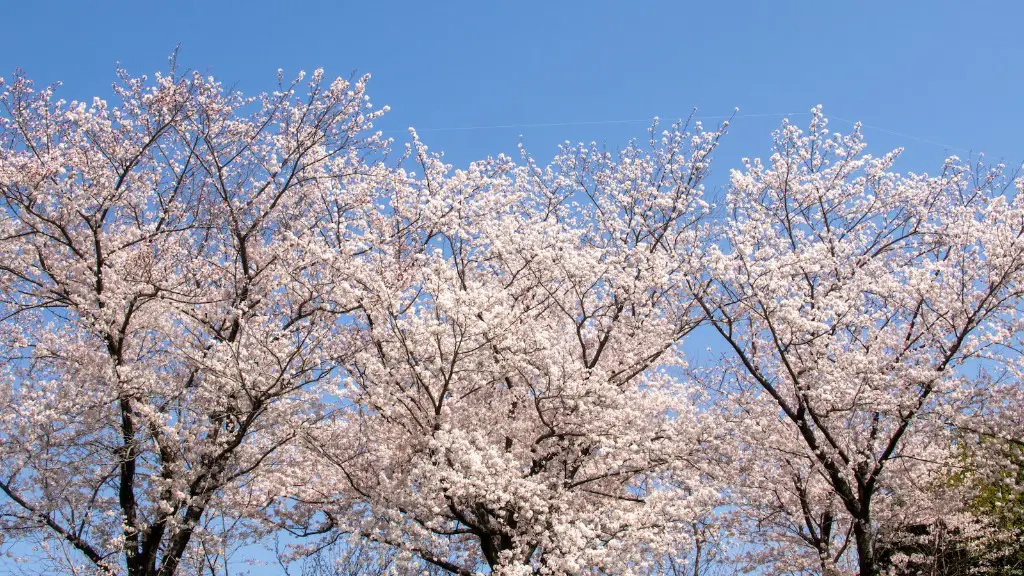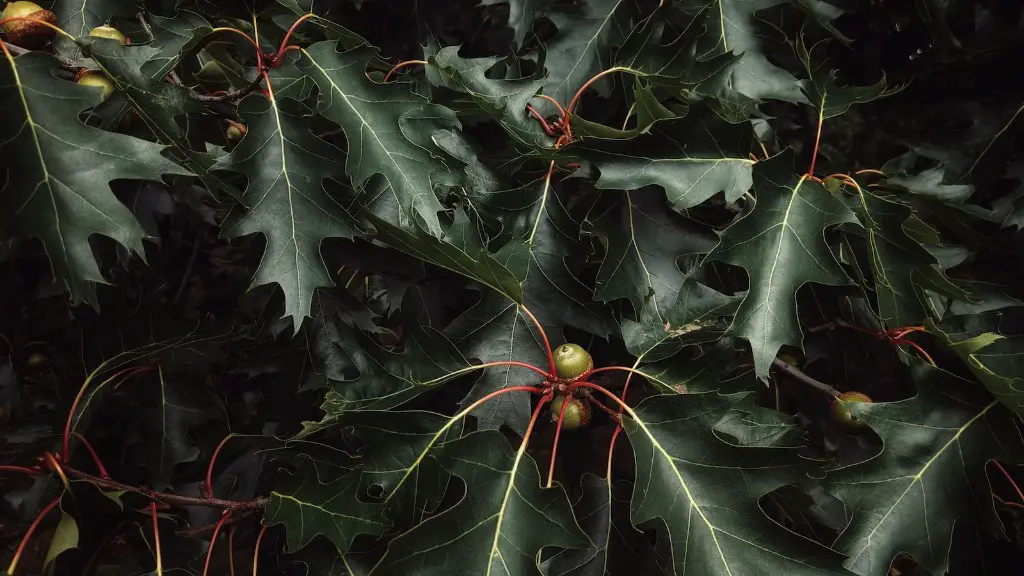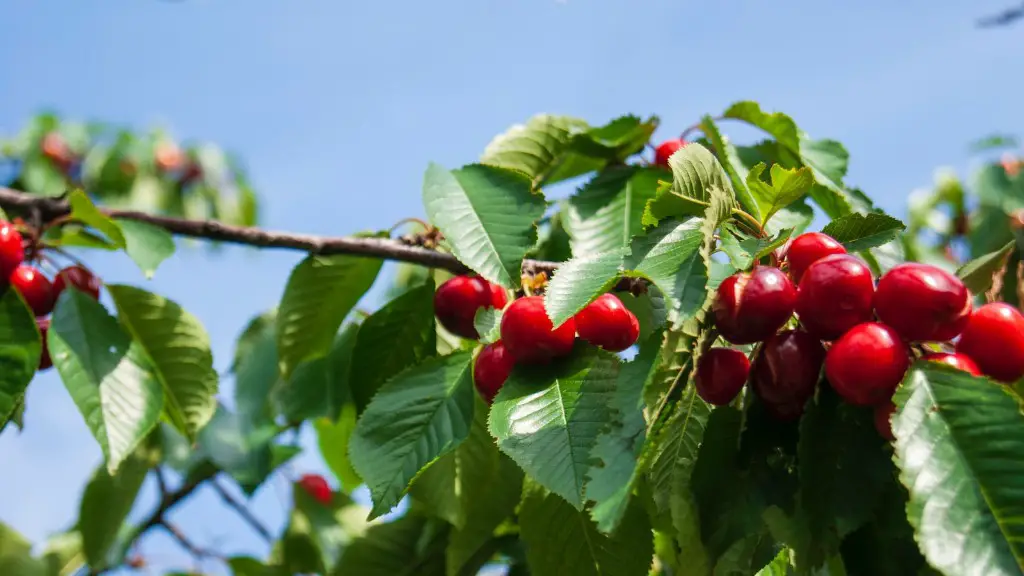Cherry Tree Root Systems
Cherry trees have a root system that is both complex and expansive for a tree of its size. Generally, cherry tree roots will not extend more than 4 feet or 1.2 meters deep, and the large majority of their roots will remain in the top 2 feet or .6 meters of soil. This is largely due to the fact that the base of the cherry tree is thin and due to the rocky nature of some soil types, limits the amount of soil the roots of a cherry tree can easily penetrate.
The vast majority of a cherry tree’s roots will remain in the top two feet of soil, branching out in all directions, much like an underground net. This is called a ‘span rooting’ type system, as the roots will spread out laterally, rather than dig down deep, creating a strong and wide support system for the cherry tree. In this system, the cherry tree is able to capture the most nutrients and water from the surrounding soil, however, it also poses a kind of fragility, as these ‘top roots’ are easily disturbed by strong winds, animals or humans.
In the two feet of the soil closest to the surface, a mature cherry tree’s root system will expand up to five times the branch length of the tree, in both length and breadth. While this is considerable, given the relatively small size of cherry tree, there are some species who are capable of reaching depths of 5 to 7 feet or 1.5 to 2.1 meters, given the right conditions. Soil composition will be the biggest factor in the depth of a cherry tree’s root system, though their environment will also play a role.
Cherry trees in cool climates and areas with heavier soils have been known to have a deeper root system, as their roots are able to penetrate further downward, as well as backward, in search of necessary nutrients. Lighter soils and warmer climates usually mean shallow root systems, as the roots can get the moisture and nutrients they need from closer to the surface, and often lack the needed strength to penetrate further.
Cherry Trees and the Environment
Cherry trees will usually start to appear in the environment by way of the wind, birds, and small mammals that carry the trees’ seeds from one location to another, allowing the cherry tree to spread and establish itself in new areas. Once planted, the cherry tree will first germinate on the surface of the soil, with its tender root system quickly reaching a depth of a foot or more within the first year of growth. Provided the rest of the environment is ideal and there are no major disruptions to the growth of the tree, the cherry tree will be firmly established by year two.
The environment in which the cherry tree is planted is key to the success of the tree, no matter the soil type. Air and sun are important, as they provide the cherry tree with its photosynthetic energy, while water and nutrients in the soil are essential for the tree’s long-term health and ability to reach its potential. If any of these elements are lacking, the cherry tree’s root system will be one of the first affected indicators.
Dwarf and Miniature Cherry Trees
Dwarf and miniature cherry trees are popular options for home gardens and urban environments, appearing to be petite and nonintrusive compared to the larger fruit-bearing cherry trees. These trees may appear small, but their roots will still spread out considerably, often an equal distance to the branches. Tilting and all manner of disruption remain a risk for these trees, even more so because of their size.
Planting a dwarf or miniature cherry tree in a pot, as opposed to in the ground, can offer a more controlled and contained environment for the tree. The soil in which it is planted and the various nutrients, minerals and water added to it, all contribute to the health of the root system and should be closely monitored. The size of the pot should be considered carefully, as it should have a capacity that allows for enough upward growth, while also providing enough space for the roots to spread out.
Watering Tips for Cherry Tree Roots
Water is essential for a cherry tree’s root system, as it is vital for their growth and maintenance. Watering the tree deeply, instead of lightly and frequently has been said to be far more effective for a cherry tree’s root system. Deep watering will encourage the roots to venture deeper in search of the valuable water, making for a strong and healthy root system. If large amounts of water are scarce, it may be necessary to water several times a week, in order to give the tree enough water to survive.
However, great care should be taken not to over-water a cherry tree, as it may lead to waterlogging, which can quickly kill the roots of the tree and eventually the tree itself. When watering a cherry tree, it is important to be aware of the soil composition, as well as the quality of the rain that may have fallen. Light and sandy soils soak up water quickly, so will require more regular waterings, while heavy clay soils will require far less.
Pruning Cherry Tree Roots
Pruning should be done with great care in order not to damage the cherry tree. If not done correctly though, it can help to achieve the desired shape of a cherry tree, as well as remove any obstructing roots. Pruning should focus solely on what can be visible, with any deep cutting or root cutting best done by a professional.
When pruning cherry trees, pay close attention not to cut any lignified roots, as these are the most vital in a cherry tree’s root system. Instead, focus on trimming back the thin, grassy root sprouts that are just beginning to take shape. These may be tempting to remove, as they’ll likely obscure some of the cherry tree’s branches and even damage or block the sidewalk or pathways surrounding it. Removing them, however, will remove some of the cherry tree’s lifeline, as these roots are crucial for bringing in the water and nutrients needed for the cherry tree to survive.
Cherry Trees in the Landscape
Cherry trees are very popular in landscaping due to their showy flowers and vibrant foliage in the spring. When planted in an environment where they can flourish it is hard to ignore their beauty, with the trees standing strong and proud, even during the winter months. The deep and well-developed root system of cherry trees allows them to be resilient to seasonal changes, whilst also able to reach out further, making them an excellent option for any setting.
Cherry trees come in all shapes and sizes, from the small and delicate dwarf varieties, right through to the large and flowering fruit trees. Whatever type of cherry tree you choose, and whatever environment you plant it in, it is important to keep in mind that the ultimate foundation of their health and longevity will lie in the deep-reaching root system beneath their feet.
Soil Amendments for Cherry Tree Roots
Soil amendments, or additions, can play a big part in the health and depth of a cherry tree’s root system. Nutrients and calcium, in particular, can create a more favorable environment for the cherry tree, as well as activate any dormant root systems that may exist. For those cherry trees not planted in the best soil, these additions can be a great help, allowing for the tree to flourish regardless of the composition of the soil.
While numerous clays, minerals, and composts can be used, it is important to note that extreme measures should be taken with caution. Furthermore, fertilizers of any kind should be kept away, as they can too easily upset the balance of the soil, and can even harm the cherry tree’s root system at its deepest levels.
Improving Soil Conditions for Cherry Tree Roots
If soil conditions can’t be added to, there are a few ways in which the current soil type can be improved. The most important thing to check for when it comes to soil for cherry trees is drainage. If the cherry tree is planted in poorly draining soil, which is all too common among sandy and clay soils, then not only will the cherry tree suffer, but its root system will too. In this instance, it may be beneficial to add some mulch or compost to the area around the cherry tree, as this will decrease the amount of water that is held in the soil.
If, on the other hand, the cherry tree is planted in sandy soil, then it may have the opposite effect, not retaining enough water for the cherry tree’s root system. In this situation, some compost or maybe even some clay particles can be added to the soil in order to help it capture more of the water and nutrients that the cherry tree’s roots are searching for. However, care should be taken not to block the roots of the cherry tree with such amendments, as this can cause suffocation, along with other fatal consequences.
Protecting Cherry Trees from Injury
If the cherry tree’s root system is exposed, then it is important to take steps to protect it from damage. This may mean adding a layer of mulch over the root system, or putting up a post or a fence around the cherry tree, in order to reduce any kind of interference that may cause structural damage.
It is also crucial to keep an eye out for any pests that may be present in the soil or around the cherry tree. Pests such as borers or carpenter ants, can easily damage and even destroy the Cherry tree’s roots, making protection from such harmful critters an essential part of a cherry trree’s care.
Diseases Affecting Cherry Tree Roots
If proper care is not taken to protect and nurture a cherry tree’s root system, then diseases such as root rot and mildew can quickly cause catastrophic damage. Both of these issues can be very difficult to manage, which is why precautionary measures are so important. Regularly monitoring the cherry tree for signs of distress will help to identify any problems early on, allowing for a far more successful treatment process.
Generally speaking, many of these diseases can easily be avoided if the cherry tree is planted in the right environment. This means a soil that is well balanced between sandy, clay and organic components, with air and sun always present, along with water and vital nutrients. With this setting, the cherry tree’s root system can grow and reach its full potential, providing a healthy foundation for the cherry tree itself.




